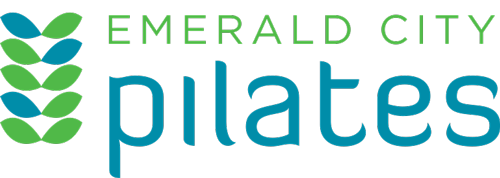Pilates & Plates: Why You Need to Add the Practice to Your Weight-Training Program
Get comfy. It’s story time.
One day, a fit and muscular girl walked into Pilates class. Confident as she grabbed a mat and ball and announced that this was her first experience of the kind, she placed her mat on the floor and waited for the rest of the class to arrive. Looking around as her classmates for the day entered the studio, she decided that this hour would be a piece of cake—she was waaaaay fitter than these other people—and she smiled with self-satisfaction.
About 30 seconds into arm holds (and three minutes into class, period), she began to frantically search the room for someone—anyone—whose shoulders seemed like they might burst into flames before hers. From there, the class only grew more difficult, and she spent several counts panting and wondering why she stepped into this torture chamber to begin with. Pride wasn’t enough to sustain her. She left class humbled and achy, but signed up for more.
New Girl’s heavy weight training didn’t translate to the Pilates mat, which is why she needed both.
When it comes to Pilates and weight training, it doesn’t have to be either/or—it can be both/and. Participating in a variety of exercises, especially those that seem so different from one another, only serves to make you an all-around fit specimen of a human.
With that in mind, let’s take a look at the ways that Pilates compliments your efforts in your weight-lifting sessions.
· Weight training focuses on big muscle groups that make you stronger and more powerful, while Pilates focuses on the little muscles that are often forgotten. When the little muscles are also strong, they serve as better support for the big muscles, and they also make the big muscles look better.
· Pilates helps to improve flexibility, an aspect of weight training that is often overlooked. Nagging aches and injuries are a sign that your body isn’t getting the stretch it needs to sustain your weighted resistance training, and sooner or later, you could pay for the neglect with a pull, a tear, or a pain that keeps you out of the gym for weeks. With Pilates, flexibility is the workout, so if you add this gem to your regimen, you’ll be sure to elevate your elasticity game.
· Pilates is one of the most effective practices to improve core strength, which is of utmost importance in weightlifting. Every lift requires an active core to hold weights in place and keep your body under control while you lift. With a strong core, your body works less, your form improves, and you reduce your predisposition to injury.
So what are you waiting for? Go ahead and try a Pilates sesh or two, and see if there are any gaps in your fitness regimen. If you’re already a regular, invite a friend who spends most of their time pushing weights. You can guarantee they won’t leave without a challenge.
